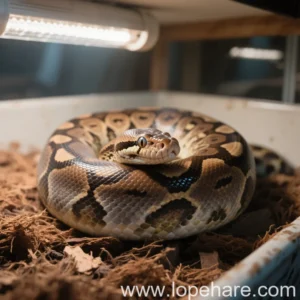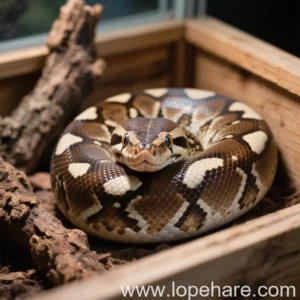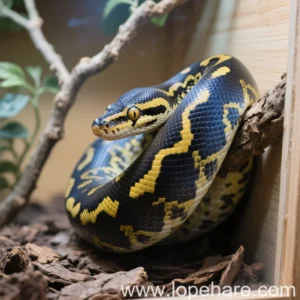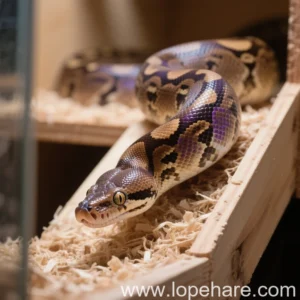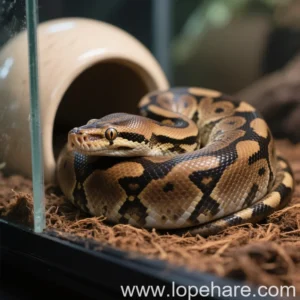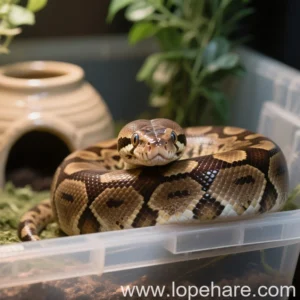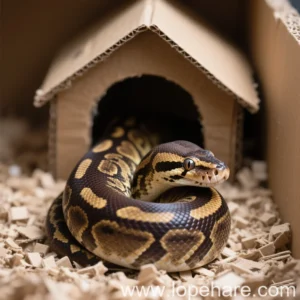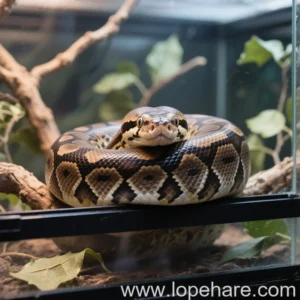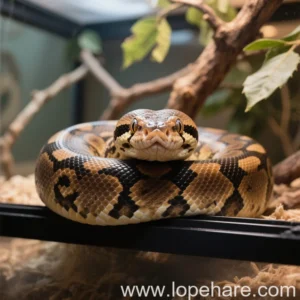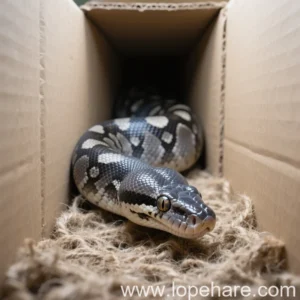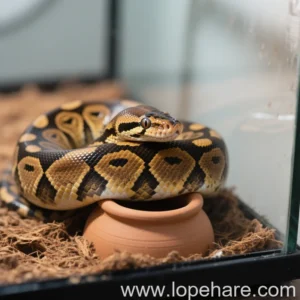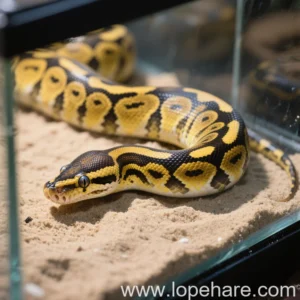Ball Python Diet: Can They Eat Live Prey? Risks and Alternatives Explained
Welcome to the lopehare blog! As editors passionate about providing comprehensive, professional care information for niche pets, we frequently encounter questions about feeding, particularly for snakes like the popular ball python (Python regius). One of the most debated topics is whether ball pythons should be fed live prey. While they naturally hunt live animals in the wild, the risks associated with live feeding in captivity often outweigh the perceived benefits.
Understanding Ball Python Diets in Captivity
Ball pythons are carnivorous, feeding primarily on rodents in their native West African habitat. In captivity, their diet typically consists of mice or rats of appropriate size. The critical decision for keepers is whether to offer these prey items live or pre-killed (either fresh or frozen-thawed).

The Risks of Feeding Live Prey
While seemingly “natural,” feeding live rodents to captive ball pythons introduces several significant risks that are largely eliminated by feeding pre-killed prey. From our perspective at lopehare, prioritizing the safety of both the snake and the keeper is paramount.
- Injury to the Snake: A live rodent, especially a rat, is capable of defending itself. They possess sharp teeth and claws and can inflict serious, sometimes fatal, bites and scratches on the snake, particularly if the snake is reluctant to strike or constrict quickly. These injuries can lead to infection, abscesses, tissue damage, and even death. Anecdotal evidence and veterinary reports frequently highlight injuries sustained during live feeding attempts as a major concern for captive snake health.
- Stress: A live, struggling prey animal can cause stress to a sensitive ball python, potentially leading to feeding refusal or other health issues.
- Parasites and Disease: While less common with commercially bred feeders, live rodents can potentially carry parasites or diseases that could be transmitted to your snake.
- Difficulty Monitoring Feeding Response: With a live animal in the enclosure, it can be harder to observe if the snake is having trouble constricting or if the prey is causing harm before being incapacitated.
Serious Threat: Injuries from live feeders are not just minor scratches. They can require expensive veterinary care, including surgery, and can permanently disfigure or kill your pet.
Given these substantial risks, most experienced keepers and reptile veterinarians strongly advise against feeding live prey to ball pythons in captivity.
Why Choose Frozen-Thawed Prey?
Feeding frozen-thawed rodents is the widely recommended standard practice in modern reptile husbandry. It mitigates the risks associated with live feeding and offers several benefits:
- Safety: This is the primary advantage. The prey is deceased and cannot fight back, eliminating the risk of injury to your snake.
- Convenience and Storage: Frozen rodents can be bought in bulk and stored for extended periods, ensuring you always have food available.
- Consistency: Frozen feeders from reputable suppliers offer a more consistent size and quality.
- Reduced Parasite Risk: The freezing process kills many common parasites that live rodents might carry.
- Ethical Considerations: Many keepers feel more comfortable feeding prey that has been humanely euthanized before being offered to their pet.

Safely Preparing Frozen-Thawed Prey
Successfully feeding frozen-thawed prey requires proper preparation to make it appealing and safe for your ball python.
- Thawing: The safest method is slow thawing in a refrigerator over 24 hours, followed by warming just before feeding. Alternatively, place the frozen rodent in a sealed plastic bag and submerge it in cool water, gradually changing to lukewarm water (NOT hot) until fully thawed. Never use a microwave, as this can cause uneven heating and internal “hot spots” that can burn your snake.
- Warming: Prey should be warmed to approximately body temperature (around 95-105°F / 35-40°C). This makes it more attractive to the snake. Use a hairdryer or place the bagged, thawed rodent in warm (not hot) water for a few minutes. Use a temperature gun to check the internal temperature.
- Presentation: Offer the prey using feeding tongs. Gently wiggle or dangle the rodent to simulate movement and trigger the snake’s feeding response.
Temperature Check: Always double-check the temperature of the prey item. Too cold and the snake might ignore it; too hot and it can cause burns.
Transitioning Your Ball Python
Some ball pythons, especially wild-caught individuals or those previously fed only live, can be reluctant to switch to frozen-thawed. This requires patience and persistence. Here are some tips for successfully transitioning ball pythons to frozen-thawed rodents:
- Ensure your husbandry is perfect (temperature, humidity, hides). A stressed snake is less likely to eat.
- Try braining the rodent: Make a small incision to expose a tiny bit of brain matter. This can make the scent more appealing.
- Scenting: Rub the thawed rodent with bedding from a live rodent cage (if you have access) to add a familiar scent.
- Try offering at dusk or night when ball pythons are naturally more active.
- Ensure the prey is warm enough.
- Be patient. Skipping a few meals is normal during transition attempts. Avoid stressing the snake by constantly bothering it with the food.
- Consider different types or colors of rodents if one isn’t working (e.g., white mouse vs. brown rat).
Other Key Dietary Factors
Beyond the live vs. pre-killed debate, several other factors are crucial for **optimizing ball python health and safety in captivity**:
- Prey Size: Prey should be roughly the same diameter as the widest part of your snake’s body. Feeding prey that is too large can cause regurgitation or impaction.
- Feeding Frequency: This varies with age. Hatchlings may eat weekly, juveniles every 7-10 days, and adults every 10-14 days or even less frequently. Avoid overfeeding, which can lead to obesity.
- Water: Always provide a clean bowl of fresh water large enough for the snake to soak in, as needed for hydration and shedding.
- Handling After Feeding: Do not handle your ball python for at least 48 hours after it has eaten to prevent regurgitation.
Ensuring correct prey size and frequency is as vital as the prey type itself for preventing common health issues in captive snakes. According to sources like the Merck Veterinary Manual, proper nutrition is a cornerstone of snake health.
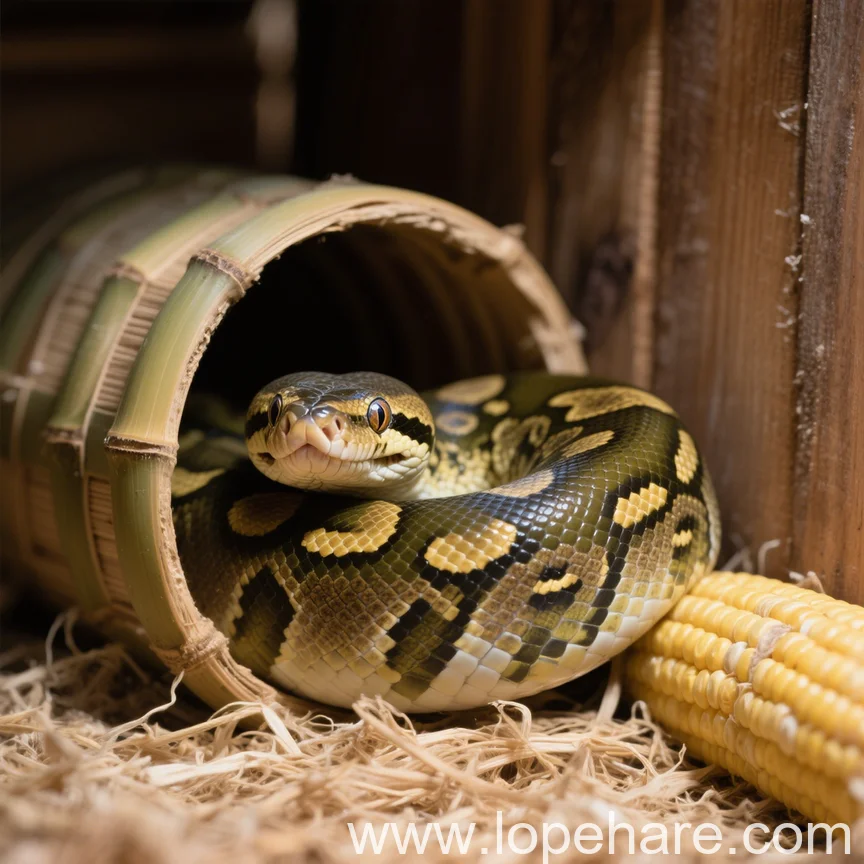
Conclusion: Best Practices for Ball Python Feeding
While ball pythons *can* eat live prey, the risks associated with this practice in captivity make it strongly inadvisable. As experts dedicated to the welfare of exotic pets on lopehare, we unequivocally recommend feeding appropriately sized, safely thawed, frozen-thawed rodents.
Making the switch to frozen-thawed is one of the most impactful decisions you can make to prevent injury, reduce stress, and ensure the long-term health and safety of your ball python. It requires a bit of preparation and patience, but the benefits for your beloved reptile are immense. Trust in established best practices, and your ball python will thank you with healthy growth and a long life.
References:
- Wikipedia: Ball Python
- Merck Veterinary Manual: Husbandry of Snakes
